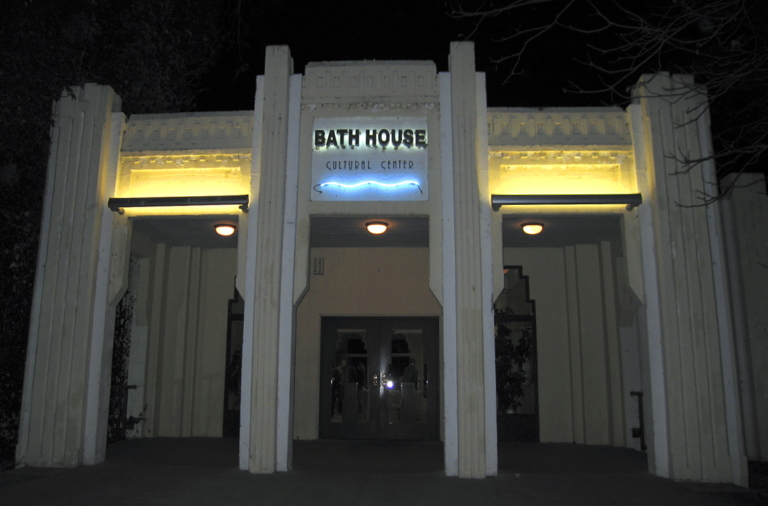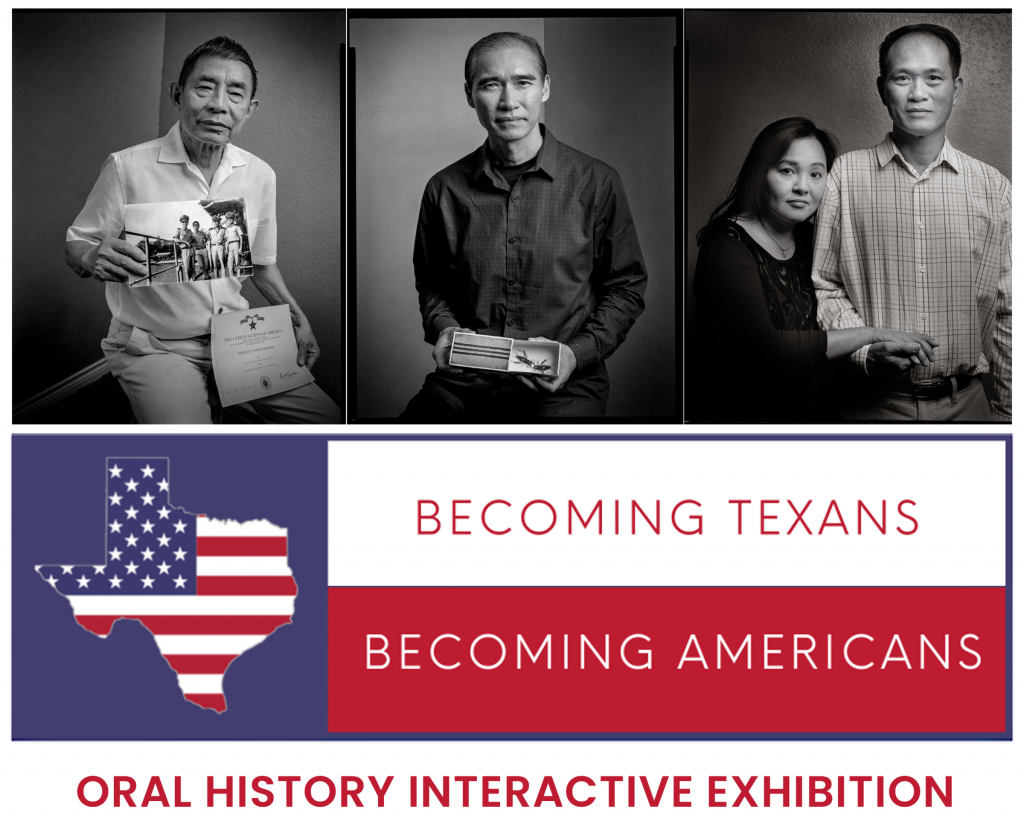Sculptures by Gisela-Heidi Strunck and Monoprints by Juergen Strunck
May 4-June 8, 2024

SEEN AND NOT SEEN + RISOGRAPHIC + BECOMING TEXAS, BECOMING AMERICANS | THRU JUN08

Sculptures by Gisela-Heidi Strunck and Monoprints by Juergen Strunck
May 4-June 8, 2024
The Bath House Cultural Center proudly hosts artists Gisela-Heidi Strunck and Juergen Strunck in 2024, celebrating their illustrious careers through an exhibition of sculptures and monoprints entitled {Seen and Not Seen}. While both artists have previously showcased their individual works at the center, this exhibition marks the first occasion where the husband and wife come together to present their creations jointly in our gallery.
Despite the differing mediums of the two artists, astute observers will recognize a subtle yet intriguing connection among some of the pieces featured in this showcase. Whether purposefully crafted or arising by chance, a noticeable bond of mutual influence and inspiration runs through the works. While each artist undeniably possesses a unique style and perspective, which merits recognition and commendation, the collaborative nature of this exhibition offers viewers a rare opportunity to appreciate the interconnectedness and resonance of their works as a cohesive whole. Through their exhibition at the Bath House, Heidi and Juergen exemplify how individual artistic approaches can converge, finding common ground and shared sensibilities to convey powerful statements within the realm of art.
In exploring the shared aspects of the works of both artists, one immediately notices a symphony of elements that intertwine seamlessly. They use graceful lines, harmonious color palettes, and solid structural compositions that create a strong sense of order and beauty. They also have a clear tendency towards imitation of nature and man-made forms, reflecting a deep contemplation and wonder for these subjects. Additionally, the artists demonstrate a fascination with organic and geometric shapes, often employing symmetric compositions to showcase their aesthetic sensibilities. Their works are saturated with vibrant hues and materials, which contribute to an overall sense of vibrancy and liveliness. Moreover, a bright and dynamic rhythmic movement is present throughout their creations, lending an undeniable sense of elegance to their artistry.
Heidi’s meticulously crafted sculptures, fashioned from a blend of domestic and exotic wood species, copper, metallic threads, acrylic, mirrors, and assorted materials, invite viewers to delve into their intricate construction with admiration and fascination. Through the arrangement and aesthetic elements of her art, one can catch glimpses of the artist’s rich tapestry of experiences gained from extensive travels and studies across Europe, Morocco, the U.S., Latin America, the Caribbean, and notably, India. Her assembled sculptures, adorned with blocks of intricately patterned wood, spheres, and cascading metallic threads emerging from copper pipes, serve as visual tributes to these locations and they encapsulate the essence of their architecture, spirituality, and unique visual language that left an indelible mark on her journey as an artist.
Juergen has long been passionate about expanding the horizons of printmaking art. Despite today’s prevalence of digitally generated images and modern methods of printing, he remains a steadfast advocate for traditional hand-pulled prints. He continues to champion the fundamental processes that encourage a deeper, more tactile connection between artist and material. Juergen’s vibrant compositions on paper radiate against their predominantly dark backdrops, showcasing his mastery of monoprints and chine collé techniques. Employing his skillful technique, Juergen applies smooth gradients of multiple ink hues onto the paper, frequently employing a conical brayer to achieve a circular effect. He then cuts these colored sheets into intricate geometric shapes before delicately affixing them onto a dark background of Japanese paper and other cotton fibers. The result is a captivating work of art where the inked shapes, brimming with graceful textures and vibrant colors, appear poised to spring to life, evoking imagery reminiscent of performers on a dimly lit theatrical stage or imposing structures standing resolutely amidst the darkness of night.
At the heart of this exhibition lies the overarching theme of collaboration. While Heidi and Juergen have each attained individual success as artists, their partnership reveals a profound sense of synergy. Despite encountering vision-related challenges in recent years, Heidi’s commitment to artistic creation remains steadfast and unwavering. Though her eyesight may have been affected, her creative vision remains animated and resilient. Juergen, on the other hand, continues to serve as a mentor, showcasing the boundless possibilities of printmaking in the 21st century through his exhibitions. Beyond their artistic endeavors, the artists provide mutual support in their daily lives, acknowledging that they continue to learn from one another, enriching not only their own practices but also the experience of their audience.

Risographic
Curated by Mylan Nguyen
May 4-June 8, 2024
The Bath House Cultural Center showcases an exhibition dedicated to celebrating the art of risograph printing. Featuring a selection of works by regional and international artists who have incorporated this medium into their artistic repertoire, the exhibition offers an exploration of the creative possibilities of risograph—or riso, as it is commonly known— printing. The artists and Riso presses featured in the exhibition are Bestu Friendo, The Cauldron Press, Center for Imaginative Cartography and Research, Chi Leong, Mystic Multiples, Natalie Andrewson, Play Nice Press, Riso Riso, SARA (Sociedad Anónima Reproducción Autogestiva), S.M. Sanz, Strange Powers Press, We Are Out of Office, Ian Wortham, and Michaela Yarbrough.
Curated by Dallas-based artist Mylan Nguyen, the exhibition highlights how riso printing has transcended its origins as a digital duplicator developed by the Japanese company Riso Kagaku Corporation in the 1980s. Initially intended for high-volume photocopying and printing in commercial environments, riso machines quickly captured the imagination of the fine art, illustration, and design communities. Artists were drawn to its compactness, versatility, and relative affordability, as well as its resemblance to traditional printmaking techniques. Through this exhibition, visitors can experience how risograph has become a dynamic medium for artistic expression in contemporary practice.
In the creation of riso pieces, artists employ various methods, such as hand-drawing, collaging, or digital techniques, to design their images. These original designs are then converted into master stencils by the riso printer. Later, the master is attached to an ink drum, which rotates swiftly, propelling the ink through the stencil onto a paper substrate. This process bears resemblance to both a copy machine and traditional silk-screen printing. The resulting images produced by the duplicator possess a distinctive aesthetic, yielding captivating patterns, textures, and vibrant color overlaps. Chromatic palettes often feature bold hues, occasionally taking on a fluorescent appearance, with shades of green, pink, yellow, and other intense colors gracing the prints. While Riso printing excels in rendering bold and vibrant colors, it also accommodates other aesthetics, enabling the creation of subdued or less saturated works that faithfully reflect the artists’ visions.
Riso printing has steadily gained popularity among artists due to its adaptability, compactness, and integration of handmade elements. Even the occasional unpredictability inherent in this printing process, including flawed registration, smudging, and uneven coverage, can sometimes be welcomed and appreciated for its charming imperfections. Additionally, this technique stands out as an environmentally conscious and sustainable print process. Utilizing vegetable oil-based inks, this method eliminates the need for electric dryers as the inks are naturally absorbed by the uncoated fibers of the paper.
Many artists aspire to share their vision with a broader audience through publishing, yet the high cost of mass printing often poses a significant barrier. Riso printing offers a solution, providing artists with a tool to reproduce high volumes of prints, posters, art books, zines, and other creations. While some riso machines may come with a substantial price tag, this hurdle has been overcome by the formation of art collectives, which allow the artists to pool their financial resources and creative energies to purchase a machine collectively. This collaborative approach not only mitigates costs but also enables artists to collectively elevate their craft and achieve their artistic goals.
Riso printing, a relatively novel medium in visual art, has quickly gained traction among artists for its versatility and stunning creations. With dynamic colors, unique textures, and eco-friendly processes, it offers artists a fresh canvas to showcase their work in a distinct manner, attracting admiration from audiences worldwide.

Becoming Texans, Becoming Americans
May 4-June 8, 2024
The Bath House Cultural Center presents “Becoming Texans, Becoming Americans,” an interactive exhibition and oral history project spotlighting the journey of Vietnamese refugees who resettled in North Texas post the fall of Saigon in April 1975. Captured through the lens of Byrd Williams IV and the interviews conducted by Dr. Betsy Brody, this exhibition preserves the essence of the Vietnamese community’s narrative. Through poignant photographs featuring individuals alongside significant personal objects, and the recorded testimonies, the exhibition serves as a vital testament to the resilience and stories of this remarkable community.
Since the end of the Vietnam War, North Texas has become a significant hub for Vietnamese refugees, with the community steadily growing since the fall of Saigon in April 1975. Initially supported by churches and organizations, subsequent waves of refugees found homes in North Texas, drawn by various factors such as climate, family connections, and employment opportunities. Today, North Texas boasts the fourth largest Vietnamese population in the U.S., with a substantial portion residing in the Dallas-Fort Worth metroplex. The “Becoming Texans, Becoming Americans” Oral History project chronicles the experiences of these refugees, shedding light on their integration into local communities, schools, workplaces, and social structures.
The project’s interviews delve into the challenges faced by Vietnamese refugees as they adapted to life in North Texas, exploring issues in employment, education, and housing. Additionally, the interviews uncover insights into the refugees’ perspectives on identity, encompassing their notions of Americanism, Vietnamese heritage, and the intersection between their past as refugees and their present as Americans. Themes of freedom, opportunity, and the influence of their Vietnamese background on their American identities emerge, revealing the complex interplay between their experiences in Vietnam and their lives in America.
For more information about the exhibition,
visit becomingtexansbecomingamericans.org
Bath House Cultural Center
521 E Lawther Drive
Dallas, 75218 TX
214.670.8749
open Tuesday-Saturday from 12 to 6pm.
The center is open until 10pm on nights with theater performances.